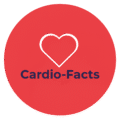Introduction
Heart failure symptoms can be subtle at first, but recognizing them early can save lives. For many people, the term heart failure sounds alarming, but it doesn’t mean that the heart has suddenly stopped. Instead, it describes a long-term condition where the heart cannot pump blood as effectively as it should.
Millions of people worldwide live with heart failure. While it is serious, the condition can be managed successfully through the right combination of medical care, healthy lifestyle habits, and simple daily monitoring.
If you or someone you love is living with heart failure, knowledge truly is power. Understanding the early warning signs and making small, consistent changes every day can improve both quality of life and long-term outcomes.
Disclosure: this post includes links to a resource I developed.
👉 To make daily monitoring simpler, I’ve also created a Heart Failure Printable Posters Bundle—a set of easy-to-use visual guides for patients and caregivers. You can find it here on Etsy.
What Is Heart Failure?
Heart failure occurs when the heart muscle becomes too weak or too stiff to work efficiently.
Common causes include:
- High blood pressure
- Coronary artery disease or past heart attack
- Diabetes
- Valve disease
- Cardiomyopathy
Doctors often describe two main types:
- Reduced pumping function (HFrEF)
- Preserved pumping function (HFpEF)
Although the mechanisms differ, both require careful management.
Common Warning Signs
Heart failure symptoms may develop slowly and can be mistaken for normal aging or other conditions. Still, spotting them early is crucial:
- Shortness of breath, especially when lying down or at night
- Swelling in legs, ankles, or abdomen
- Rapid weight gain from fluid retention
- Fatigue or reduced exercise tolerance
If these symptoms worsen suddenly, it’s important to call your doctor immediately.
Why Daily Weight Monitoring Matters
A simple scale can be a lifesaving tool for people with heart failure. Sudden weight gain often means fluid is building up in the body, even before swelling is visible.
What to watch for:
- A gain of more than 2–3 pounds (1–1.5 kg) in a single day
- A gain of 5 pounds (2–2.5 kg) in a week
Tracking your weight daily and sharing this log with your healthcare provider can help detect problems early and prevent hospital visits.
Lifestyle Habits That Support the Heart
Living with heart failure isn’t only about medication—it’s about building heart-healthy habits into your daily routine.
✅ Limit salt: Avoid processed foods and keep salt intake below 2–3 grams per day.
✅ Stay active: Gentle exercise like walking can strengthen your body and improve stamina.
✅ Don’t smoke: Tobacco makes heart failure worse.
✅ Limit alcohol: Too much can strain the heart.
✅ Get vaccinated: Flu and pneumonia vaccines help prevent complications.
Even small, consistent steps can make a meaningful difference.
Knowing When to Act
Doctors often teach patients to think in “zones” or “levels of risk”—when symptoms are stable, when to be cautious, and when urgent care is needed. This approach helps patients recognize when to call the doctor before things get worse.
For example:
- Feeling well and stable = keep following your plan
- Mild changes (like slight swelling or fatigue) = contact your doctor
- Severe shortness of breath or rapid weight gain = seek urgent care
Understanding these “zones” empowers patients and caregivers to act quickly and confidently.
Why Visual Tools Help
Medical information can be overwhelming, especially when you’re managing a chronic condition. Visual aids make key messages easier to remember, especially for older patients or caregivers juggling many responsibilities.
Our printable bundle was created with this in mind: clear, practical, and ready to use at home or in clinics.
Conclusion
Heart failure is a serious condition, but it doesn’t mean life stops. With knowledge, daily monitoring, and healthy habits, patients can live longer and better. Recognizing the warning signs, tracking your weight, and knowing when to call your doctor are all vital steps in self-care.
👉 If you’d like a practical, easy-to-use resource for patients and caregivers, take a look at our Heart Failure Printable Posters Bundle available here on Etsy. It’s designed to make daily heart failure management simpler and more effective.
References
- McDonagh TA, Metra M, et al. 2021 ESC Guidelines for the diagnosis and treatment of acute and chronic heart failure. European Heart Journal. 2021;42(36):3599–3726.
- Heidenreich PA, Bozkurt B, et al. 2022 AHA/ACC/HFSA Guideline for the Management of Heart Failure. Journal of the American College of Cardiology. 2022;79(17):e263–e421.
- Centers for Disease Control and Prevention (CDC) – Heart Failure Information
- Mayo Clinic – Heart Failure: Symptoms and Causes
⚠️ Disclaimer: The content on Cardio-Facts is for informational and educational purposes only and does not constitute medical advice. Always consult a qualified healthcare professional regarding your health. Read our full disclaimer and legal policies.
